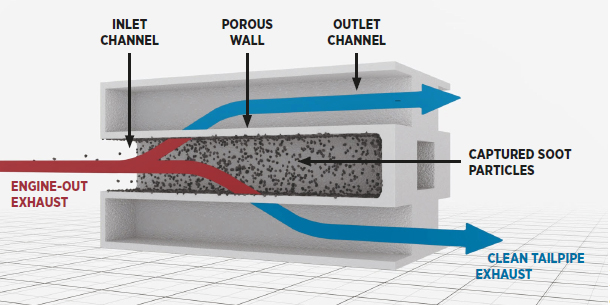With the implementation of BS 6/VI on April 1, 2020 the Indian government is taking first strong measures to limit vehicular tailpipe emissions.
People all over the world are deeply concerned about something hidden in plain sight: the poor quality of the air. And the concern is quite justified; in a report in 2018, the World Health Organization (WHO) mentioned that 93% of the world’s children under the age of 15, are exposed to air laden with fine particulates exceeding the recommended air quality guidelines. These fine particulates – also known as PM2.5 due to their size less than 2.5 micrometers – are invisible to the naked eye, but once inhaled, can, due to the World Health Organization (WHO), cause “greater risk for chronic diseases such as cardiovascular disease later in life.” [1]
A report from the WHO also “reveals that when pregnant women are exposed to polluted air, they are more likely to give birth prematurely, and have small, low birth-weight children”.[2] Additionally, poor air quality “also impacts neurodevelopment and cognitive ability.”[3] Especially children, elderly people, and pregnant women are found to be more susceptible to these poor health effects.
Recently, India has been taking bold measures to clean up its cities. In 2018, 22 of the world’s 30 most polluted cities were in India, with Delhi ranked the world’s most polluted capital.[4] While the sources of the high particulate pollution are many – dust, cooking, crop burning, and vehicles, to name a few – it is India’s burgeoning affluent middle-class and its increasing desire for cars – that has the government taking strong measures to limit vehicular tailpipe emissions.
One significant step was the decision to skip one level of regulation and move directly from Bharat Stage 4/IV to Bharat Stage (BS) 6/VI norms, which are equivalent to the respective European versions. These regulations are some of the tightest in the world, requiring deep reductions in tailpipe emissions of harmful gases (carbon monoxide, hydrocarbons and nitrogen oxides). Moreover, particulate emissions are more tightly controlled through the introduction of a particle number (PN) limit, which allows no more than 6x1011 (that’s 600 billion) particles to be emitted per driven kilometer. Also introduced are new ways of testing vehicles through the “real-world driving emission” tests, also known as RDE, ensuring cleaner exhaust during everyday driving.
Emission norms are not new, not even in India. Engine and exhaust after-treatment systems have been developed for several decades now and are very efficient. However, the technologies continue to evolve, and implementation of BS VI will ensure that these latest technologies are adopted on new vehicles sold in India.
One technology worth highlighting is the wide adoption of direct-injection systems in petrol vehicles. Compared to the traditional port-fuel injection, the ability to control the amount and timing of fuel injection in the cylinders improves combustion and ultimately the vehicle’s fuel consumption. An undesired effect of the fuel impinging against the cylinder walls, however, is the increased production of particulates, which are emitted into the air if untreated by emissions control systems.
Gasoline particulate filters (GPFs) have been developed, specifically to address this problem in petrol systems. As the exhaust flows through the filter, particulates are trapped on the wall surface allowing the cleaned exhaust to exit the filter. The performance of these filters only improves with time: with some ash collected on the filter walls, they capture over 90% of the soot particles, preventing them from escaping the tailpipe and polluting the atmosphere. The system is designed by the automaker to periodically clean or “regenerate” the filter by burning off built-up soot, so that the filter doesn’t need to be replaced or serviced.
Filters have already been proven as a highly effective technology as they have been successfully deployed on diesel vehicles for several years now in other areas of the world. Corning Incorporated, a pioneer in emissions control, has over 45 years of materials and processing experience with ceramic substrates and filters. Corning’s GPFs are already deployed on millions of vehicles in Europe and China. Building on 25 years of collaboration with the Indian automobile industry, Corning looks forward to introducing these innovative and proven technologies to the India market – and helping India affordably and effectively reduce tailpipe particulate emissions for cleaner and healthier cities.
____________________________________________________
[1] “More than 90% of the world’s children breathe toxic air every day”, World Health Organization, 29 October 2018 [3]. www.who.int/news-room/detail/29-10-2018-more-than-90-of-the-world%E2%80%99s-children-breathe-toxic-air-every-day
[2] Ibid [3]
[3] Ibid [3]
[4] Van Mead, Nick, “22 of world's 30 most polluted cities are in India, Greenpeace says”, The Guardian, 5 March 2019. www.theguardian.com/cities/2019/mar/05/india-home-to-22-of-worlds-30-most-polluted-cities-greenpeace-says
"Filters have already been proven as a highly effective technology [...]."
"As the exhaust flows through the filter, particulates are trapped on the wall surface allowing the cleaned exhaust to exit the filter."





